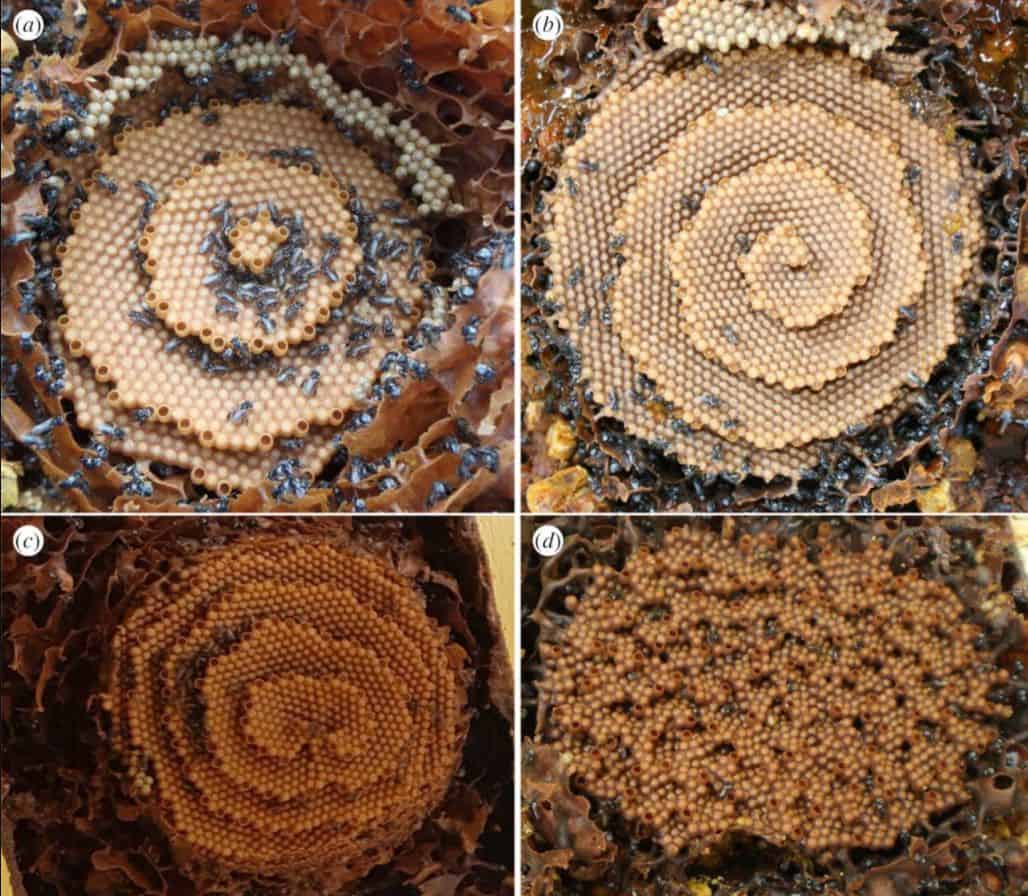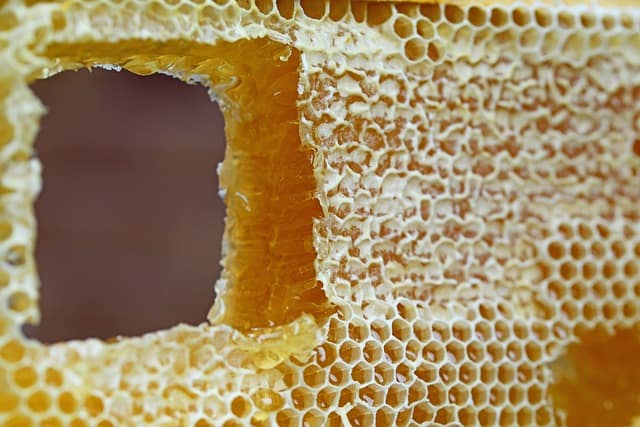Australian stingless bees build their honeycombs following complex patterns without having a prior plan or coordinating globally with the rest of the worker bees. This is the conclusion of a study, which shows that these insects follow the same mathematical rules as atoms or molecules when they are added to a crystal.
An international team of scientists, led by the Andalusian Earth Science Institute of Earth (IACT), a joint center of the Spanish Research Council (CSIC) and the University of Granada, has revealed for the first time one of the secrets of nature that It does not yet have a convincing explanation: what mathematical patterns bees follow to make their perfect honeycombs.
Researchers, who have published their results in the Journal of the Royal Society Interface, demonstrate, in an example of the applicability of mathematics to nature, that Australian stingless bees (Tetragonula carbonaria) build their honeycombs following complex patterns without having a prior plan or coordinate globally with the rest of the worker bees.
According to their results, bees make their honeycombs following the same mathematical rules as atoms or molecules when they are added to a crystal. In this way, the honeycombs form the same terraced patterns that are observed in minerals, such as in the mother-of-pearl shells of molluscs.
“The combs of T. carbonaria present surprising patterns that can be spirals, double spirals, or in the shape of a target”, explain Bruno Escribano Salazar and Antonio J. Osuna Mascaró, two of the IACT researchers who have participated in this study.

To date, it was known that worker bees build hives by adding new cells to the end of each layer of the honeycomb, but there was no convincing explanation for how these Australian endemic insects came to form these complex patterns. “In the past, it was thought that some kind of coordination and communication between workers bees would be necessary, possibly through chemical signals,” the scientists report.
Without a prior plan
The research, in which scientists from the University of Cambridge and the University of Veterinary Medicine of Vienna collaborate in addition to the IACT, has allowed the development of a mathematical model that explains how bees reach these patterns without the need for a prior plan or global coordination.
By examining the structures and order that emerge in the honeycombs, the researchers found a model of minimal complexity, showing that each individual bee only needs information about its immediate environment. With this minimal information, each worker can contribute to growth without the need for group coordination or superior intelligence. The observed patterns are, therefore, an emergent phenomenon, the result of the local behaviour of the workers.
The experts simplified the model to just two parameters: (R) the typical size of the bee and (α) a random term related to the variability in the honeycomb cells. By fine-tuning these parameters, the model is able to generate all the patterns observed in the honeycombs.
“We know that bumblebees learn by watching others; the behaviour of bees is affected by their emotional states, or they can even handle concepts such as’ equal ‘and’ different, ”the authors point out. There is also evidence of intelligence when building their honeycombs. “They solve occasional construction problems, and they do so in a flexible way that suggests they are not just acting on instinct,” they stress.
“Rigid” Behavior
But they also have a series of “rigid” behaviors, simple and innate, that allow the hive to function.
In bee colonies, these innate behaviors allow a phenomenon called stigmergy, by which complex phenomena can arise from the simple actions of many individuals, without the need for them to have a general plan.
“The bees coordinate their actions by modifying the environment, they do not need a master plan … In this case, they do not even need to communicate!”, The researchers point out. Simply modify their environment locally, and self-organization emerges almost out of nowhere. “The structures that we describe here are the result of an emerging phenomenon, it is not a general plan, but the result of simple accumulated actions,” they indicate.
The same model (with some differences in its parameters) had previously been applied to crystal growth on a microscopic scale by these same researchers. Therefore, even though both systems are very different, the same patterns emerge as a consequence of the same rules of self-organization.
